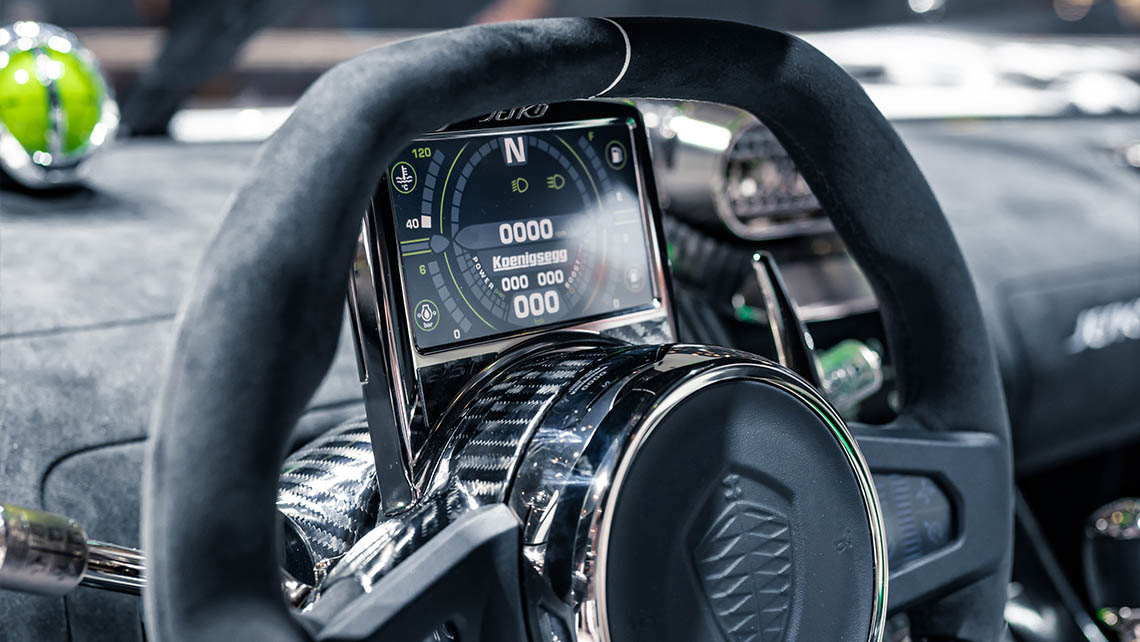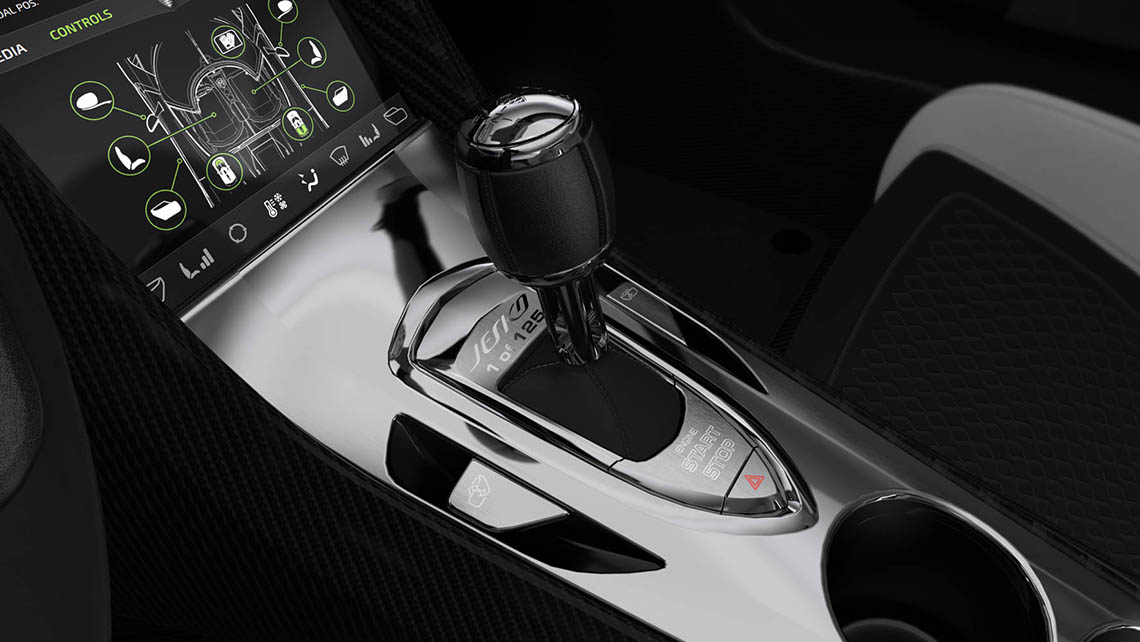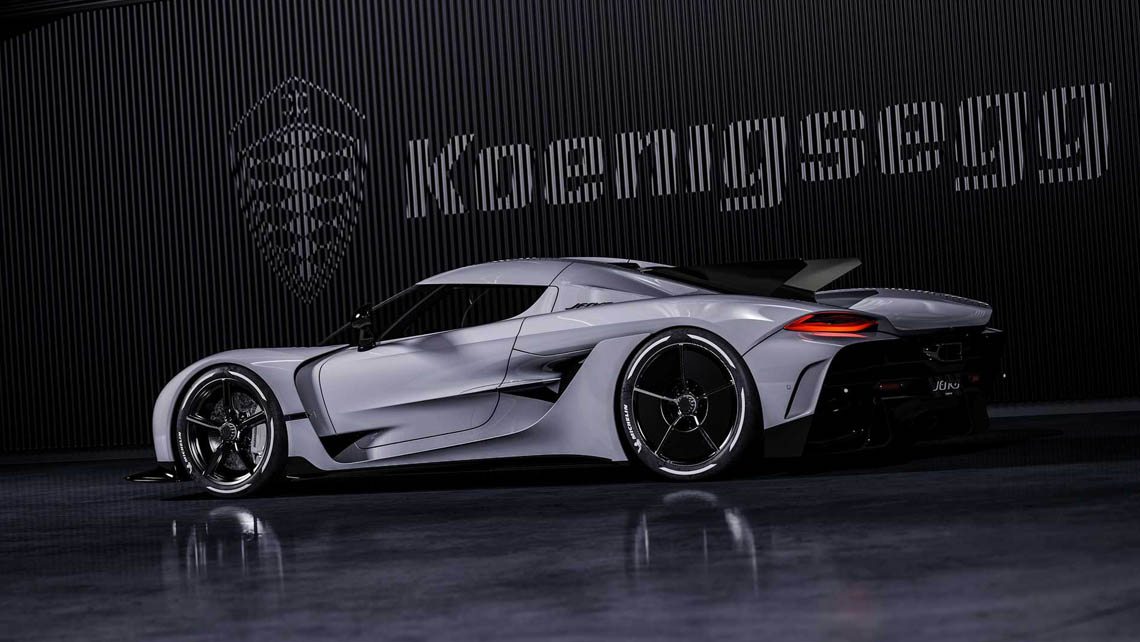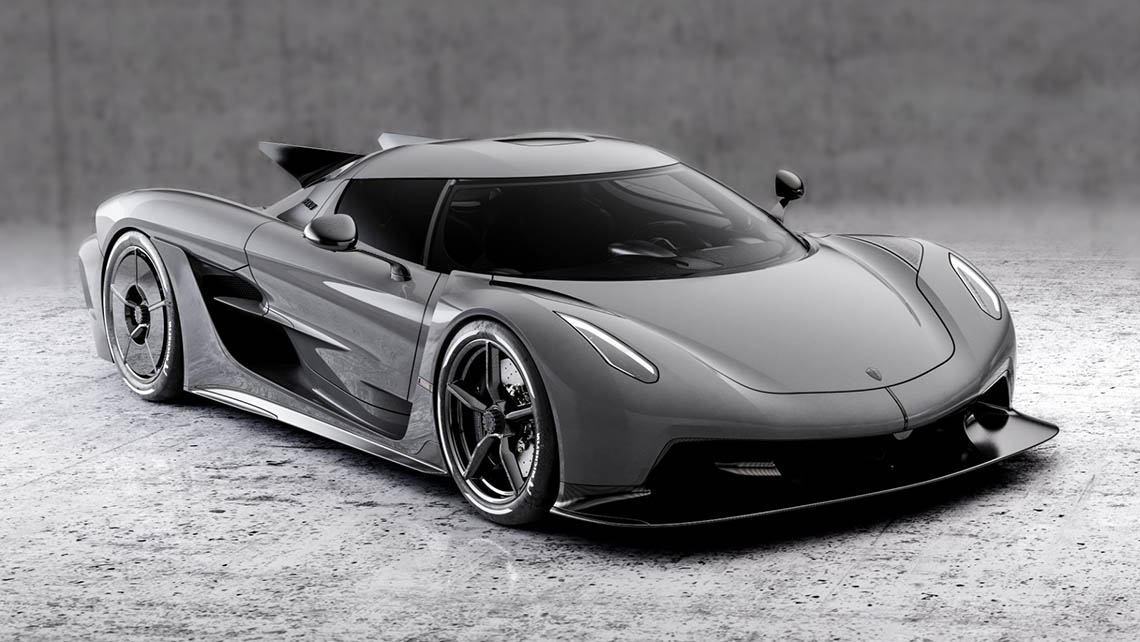Jesko Absolut, a land-based rocket-ship determined to reach unheard-of speed.

- The Koenigsegg Jesko Absolut has been unveiled. It is the fastest Koenigsegg ever made and the company will never endeavor to make a faster series-production road car – ever. Customers will be able to choose between the Jesko Absolut and the more track-oriented Jesko version that was presented a year ago.
- Every surface element on the Jesko Absolut has been purposefully constructed to reduce drag or surrounding turbulence around the car while increasing high-speed stability. Although just as powerful, the Jesko Absolut is a more seamless and stealthier interpretation of the Jesko, its track-focused sibling.
- The Jesko Absolut has a drag coefficient value of only 0.278 Cd. The low drag in combination with a frontal area of 1.88 m2 in combination with a power level of minimum 1600 bhp, make the Jesko Absolut destined to achieve higher, more extraordinary speeds than any Koenigsegg or any other fully homologated car before it.
Design and Aerodynamics
The Jesko Absolut presented a rigorous exercise in smoothing out surfaces on the car to remove any form of drag-causing elements while adding rear volumes that streamline the airflow. Over 3000 hours have been invested in fluid dynamics (CFD) and aerodynamics analysis, alongside over 5000 hours of design and engineering for the Jesko Absolut on top of the Jesko. The CFD team meticulously went over every inch and design detail of the car, defining the elements needed to get to the drag coefficient even lower than the target of 0.28 Cd, to just 0.278 Cd.
Most obvious when looking at the Jesko Absolut, is the removed massive rear wing. The wing is removed to reduce downforce and drag – dropping downforce from 1400 kg to 150 kg.
The Jesko Absolut shape was reassessed with minimal drag in mind. This meant elongating the car, giving it a more tear-dropped shape. The rear extension of the Jesko Absolut makes it 85 mm longer than the track-focused Jesko and the dished rear wheels, really change its appearance.
- Read More about Aerodynamics
-
Over 3000 hours have been invested in fluid dynamics (CFD) and aerodynamics analysis, alongside over 5000 hours of design and engineering for the Jesko Absolut on top of the Jesko. The CFD team meticulously went over every inch and design detail of the car, defining the elements needed to get to the drag coefficient even lower than the target of 0.28 Cd, to just 0.278 Cd.
Most obvious in the Jesko Absolut is the removal of the massive rear wing of the track version to take away the huge drag and downforce – dropping from 1400 kg of downforce on the track version to 150 kg on the Jesko Absolut. In place of a rear wing are two rear hood fins to maintain the stability of the car. The car is also more streamlined, reducing the high-pressure downforce zones that the track version has.
As seen on the aerodynamics diagram, the peak pressure area is in the front radiator, but the rest of the car has a significantly reduced downforce. More modifications were also done to the Jesko Absolut, such as more streamlined front splitter winglets, replacing its front louvers with smoother ones and the addition of removable wheel covers. Every surface finish is intended to be as slick as possible for air to glide effortlessly over.
The engineers and design team have worked hand in hand in order to achieve the low drag numbers while maintaining an iconic Koenigsegg visual imprint. The Jesko’s form and design have been reassessed with airflow and wind in mind for the Jesko Absolut. When looking at achieving even higher top speeds, the first consideration was to ensure as much straight-line flow as possible in the rear. That meant elongating the car more with a tear-drop shape. This extension in the aero-tail of the Jesko Absolut makes it 85 mm longer than Jesko and brings a completely new look to the rear of the car. “It was a great design opportunity to celebrate the visual lightness in the rear of the car”, says Marcello Raeli who was the lead designer on the Jesko Absolut project.
The design team and the engineers worked very efficiently around the aerodynamic requirements of the car – no more and no less to its exacting need for speed. Marcello sums things up for the Jesko Absolut well by saying that “as a result of removing these drag-causing elements and streamlining the new surfaces in the rear, the Jesko Absolut has a different profile”. He concludes that “the Jesko Absolut is seamless and sleek – almost like a land-based rocket”.The top speed of the Jesko Absolut will be extremely high. How high depends on the conditions and location of a possible high-speed run. If the opportunity arises the Jesko Absolut will be ready to take the crown. The name is self-explanatory – this is the fastest Koenigsegg that will ever be made – it is the Jesko Absolut.
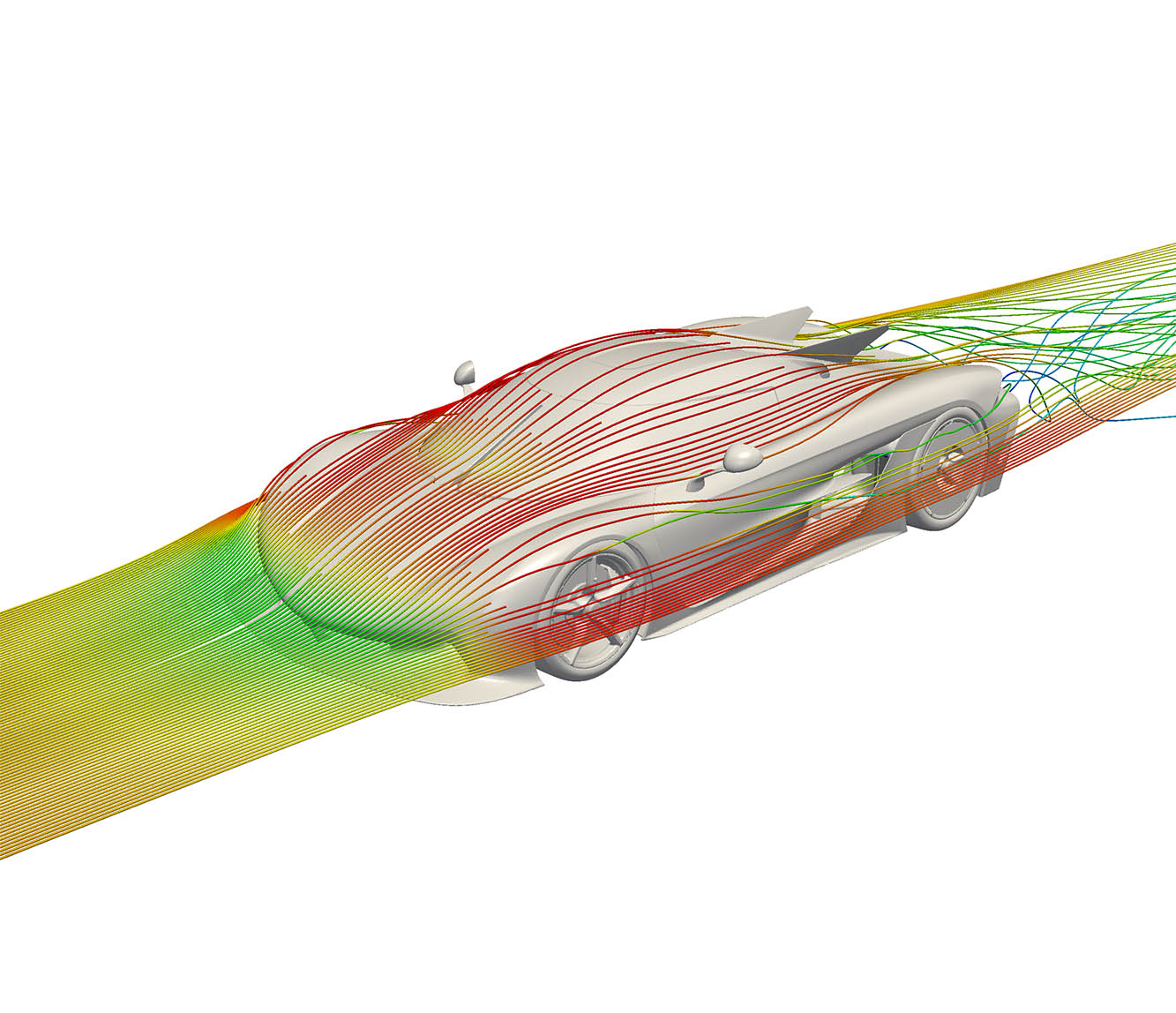
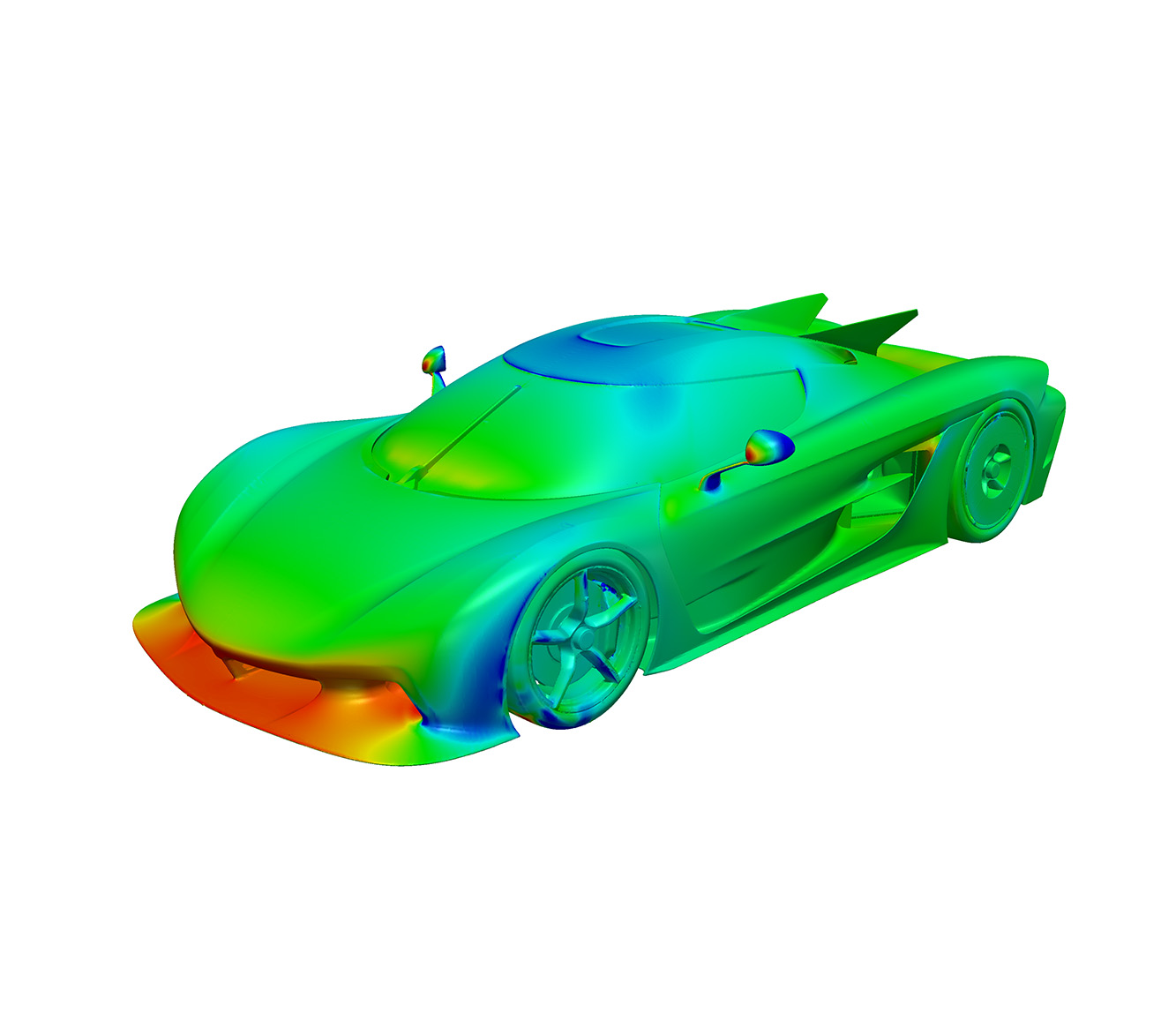
The world’s lightest V8 crankshaft
Both the Jesko (track-oriented version) and the Jesko Absolut (high-speed version) will be powered by a 1280 bhp (1600 bhp on E85), twin turbo charged V8 engine, featuring the world’s lightest V8 crankshaft that weighs just 12.5 kg. This new flat-plane 180-degree crankshaft produces more power with greater efficiency while achieving a higher 8500 rpm rev limit. The flat-plane design allows even firing across engine banks, creating a visceral engine sound that gives more power. Koenigsegg’s engine architect, Dr. Thomas Johansson has also designed super-light connecting rods and pistons to counter the tendency of greater vibrations in flat-plane engines
- Read More about Jesko Absolut Engine
-
The fuel injection system is re-designed. Added aeration means a cooler cylinder, cleaner combustion, and less strain on the engine at the top of its power range.
The cylinders in the twin-turbo V8 engine are fitted with the world’s first individual in-cylinder pressure sensor system for serial production. This allows the in-house designed and produced Engine Management System to monitor and operate each cylinder at maximum efficiency and achieve ultimate flexibility and control.
This mix of changes and technological improvements raises the engine’s rev limit to 8500 rpm – and increases the power to 1600 bhp on E85 fuel. When running on regular gasoline, the engine produces 1280 bhp. Torque is increased to 1500 Nm. The Jesko and Jesko Absolut feature Koenigsegg’s most powerful engine to date. At the same time it might also be the most powerful internal combustion engine in the history of homologated production cars.
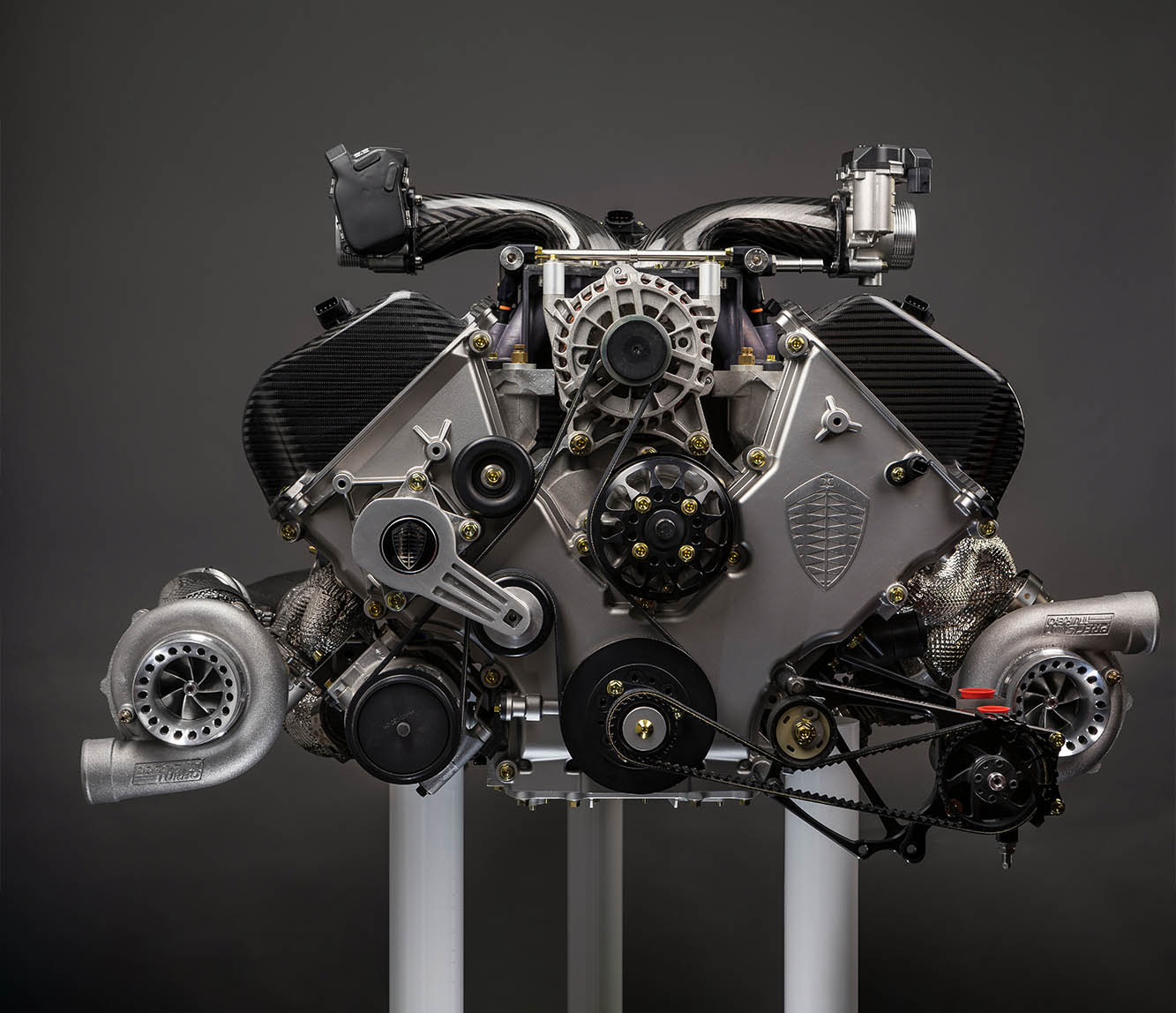
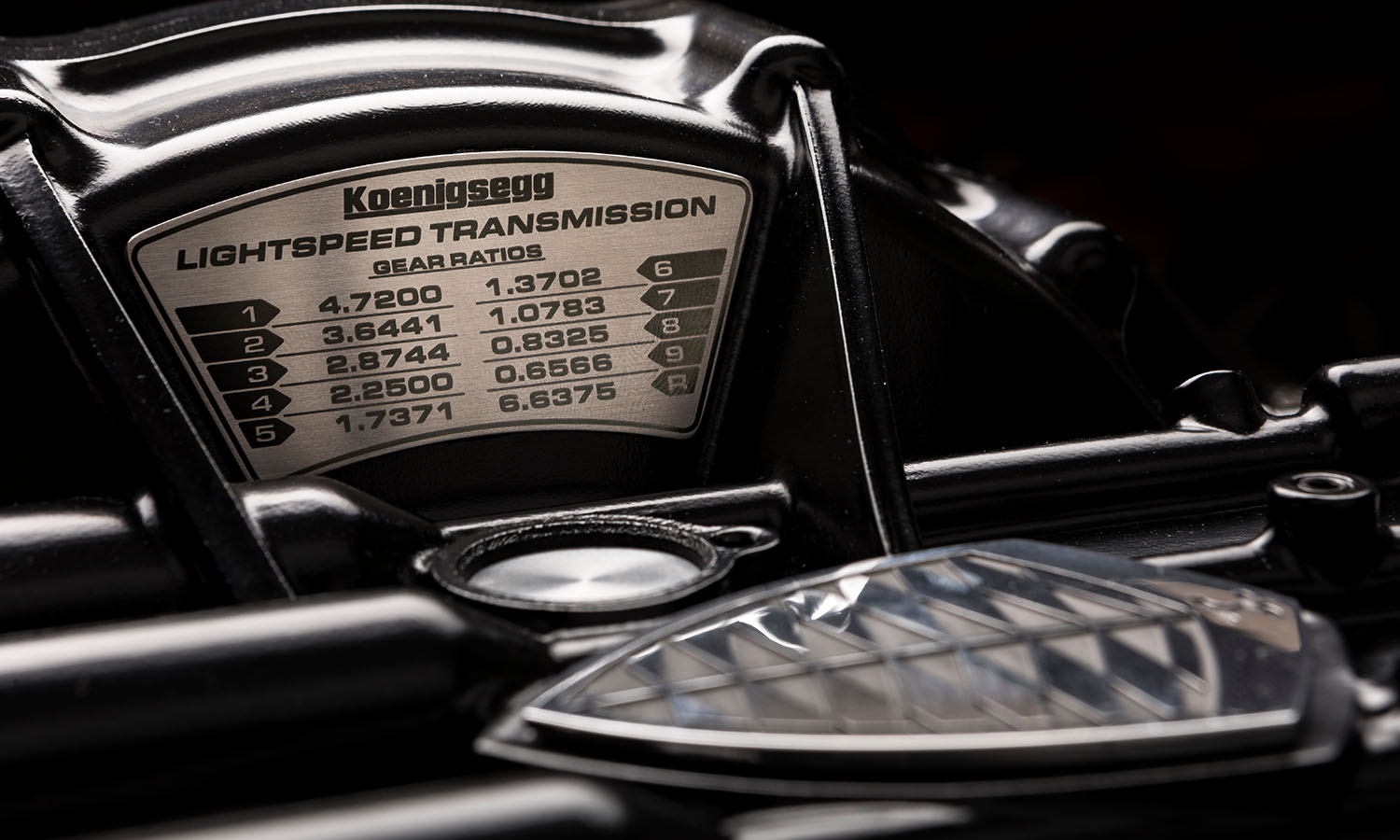
Nine-speed, multi-clutch transmission – 100% designed and built by Koenigsegg
The Koenigsegg Light Speed Transmission (LST) represents a scale of evolution not seen since the development of modern dual-clutch technology (DCT) at the turn of the century.
LST is Koenigsegg’s latest gearbox innovation comprising nine forward gears and several wet, multi-disc clutches in a compact, ultra-light package. It is capable of gear changes between any gear, at near light speed. This is thanks to the simultaneous opening and closing of clutches, which make the driving experience so seamless that it feels like the driver and car are symbiotically connected.
Equally revolutionary is the size and weight of the LST. Modern high-performance DCTs can easily weigh well in excess of 120 kg, yet the nine-speed Koenigsegg LST transmission weighs just 90 kg, including fluids.
The package is also half the size of the previous Koenigsegg transmissions. This small size keeps the weight closer to the center of the car, improving weight distribution and handling.
What takes LST from impressive to evolutionary, however, is that these shift-time benefits apply when changing between ANY forward gears.
- Read More about LST
-
DUAL-MODE SHIFT
The LST comes with two ways of shifting gears manually – Single-increment gear changes or UPOD gear changes (multi jump gear change).
Press the desired paddle or central shifter to the first notch and the transmission instantly changes one gear. Press the paddle or the central shifter beyond that first notch and the transmission chooses the next optimal gear directly – regardless of how many gear jumps it is. The transmission’s intelligent UPOD system will instantly detect optimum gear and engage that gear.
FLEXIBLE SHIFT
Modern sports car drivers are already accustomed to steering wheel paddles and will feel perfectly adept to gear shifting with dual-notch paddles located behind the steering wheel. But, the Jesko also offers an old-school alternative with a short-throw ‘stick-shift’ fitted with the same dual-notch operation.
UPOD – ULTIMATE POWER ON DEMAND
Standard modern dual-clutch transmissions (DCT) are designed to predict and pre-select the next gear based on inputs from the driver. However, if that prediction is wrong, the driver will experience G-force losses and slow shift response. In addition, DCTs only work in single-gear intervals.
The LST, on the other hand, overcomes the normal DCT-problems via its unique multi-clutch design and “UPOD” technology – Ultimate Power On Demand. UPOD is the brain that instantly selects and engages optimum gearing for maximum acceleration. It selects the ideal gear for maximum power with a light-speed gear change, regardless of how far away the gear is. UPOD uses vehicle and engine speed to determine the correct gear for maximum power and directs the LST to engage that gear.
The effect is instant, available power that’s always optimized in RPM range and RPM reach, allowing maximum acceleration for overtaking, corner exits and smooth overtaking. In a world of instant gratification, this is power on demand like never experienced before.

Handling
Koenigsegg uses the industry’s longest front and rear wishbones, more akin to Formula 1 racing than the typical road car. Enlarged wheel bearings in lightweight housing provide an unrivaled mix of responsiveness and stability.
The Jesko features adjustable dampers that are manufactured by the Swedish specialists at Öhlins and then customized with active control electronics at the Koenigsegg factory in Ängelholm. The dampers are adjustable for both bump and rebound damping, as well as spring ratio and ride height, with suspension management modes available at the driver’s fingertips.
The Jesko Absolut features a tuned suspension setup that is more tailored to extreme high speeds and less downforce. The front hood air dam, as well as the front triplex system is removed as they are needed for the Absolut. These modifications give the opportunity for a larger front luggage space in the Absolut. The roof can be stowed there like on previous Koenigsegg models and the softer suspension gives a more comfortable ride apart from saving luggage space.
Both variants of the Jesko lean heavily on the pedigree of previous record-breaking Koenigsegg models. Their combination of power, aerodynamics, chassis dynamics and high technology in general will set new standards in the Megacar industry for years to come.
The top speed of the Jesko Absolut is extremely high. How high depends on the conditions and location of a possible high-speed run. If the opportunity arises the Jesko Absolut will be ready to take the crown, regardless who holds it.
- Read More about Suspension and Steering
-
ACTIVE ENGINE MOUNTS
The engine mounts used in the new Koenigsegg Jesko are taken from the existing Regera. They are active engine mounts designed to deliver a more relaxed ride at lower speed.
When driving at posted speeds, the mounts stay soft to isolate engine noise and vibrations. During spirited driving, the mounts firm up to solidify the car and give greater response. The effect is visceral, transforming the car from relaxed to active in the blink of an eye.
NEW WHEEL DESIGNS
Jesko is equipped with two new wheel designs – one forged aluminium and one carbon fibre. Both are designed to be as light as possible for their size, with the carbon wheels being the super-light option.
Both front and rear wheels are larger than the Agera wheels that came before them. Still, the 21” x 12” rear carbon wheels weigh just 8.4 kilograms each, while the 20” x 9.5” front wheels weigh 6.7 kilograms.
Lighter wheels help to minimise unsprung weight – the mass that is not controlled by the vehicle’s suspension system. They also allow for faster acceleration, better braking and more responsive cornering.
The enlarged wheel design allows for larger brake discs and better brake cooling while still retaining optimal strength and super-light weight for the wheel’s size.
CLASS-LEADING GRIP
Jesko’s new wheels are fitted with Michelin Pilot Sport Cup 2 tires as standard. Michelin’s all-new Pilot Sport Cup 2 R is an available option for dry weather use only.
The Pilot Sport Cup 2 R is Michelin’s latest high-performance tire. It features a new compound, increased sidewall strength and a new tread pattern to provide a contact patch 10% bigger than the standard Cup 2 tire.
Michelin’s track tests suggest an improvement in lap times with the Cup 2 R similar to what the same car on standard Cup 2’s might achieve with a 10-30% increase in engine output, depending on the car.
Koenigsegg works closely with Michelin to provide customers the absolute best in on-track and on-street performance. The new Michelin Pilot Sport Cup 2 R is the perfect compliment to Jesko’s new engine, gearbox, chassis and aerodynamics package.
TRIED AND TRUE, LEARNED FROM EXPERIENCE
These new technologies are the perfect compliment to Koenigsegg’s existing chassis dynamics package, developed over 20 years at the cutting edge of vehicle performance.
Koenigsegg uses the industry’s longest front and rear wishbones, more akin to Formula racing than a typical road car. Enlarged wheel bearings in lightweight housings provide an unrivalled mix of responsiveness and stability.
Our adjustable dampers are manufactured by the Swedish specialists at Öhlins, and then customised with new electronics at the Koenigsegg factory in Ängelholm. The dampers are fully electronically adjustable for both bump and rebound damping, as well as spring ratio and ride height, with suspension management modes available at the driver’s fingertips. Once fitted, they provide the perfect compliment Koenigsegg’s in-house traction and stability control programs for the ultimate in dynamic performance, safety and control.
Koenigsegg has been breaking records – both in a straight line and on the track – for 25 years. Jesko has been designed to build on this pedigree, especially on the track, where its combination of power, aerodynamics, chassis dynamics and technology will set new standards in high-performance driving for years to come.
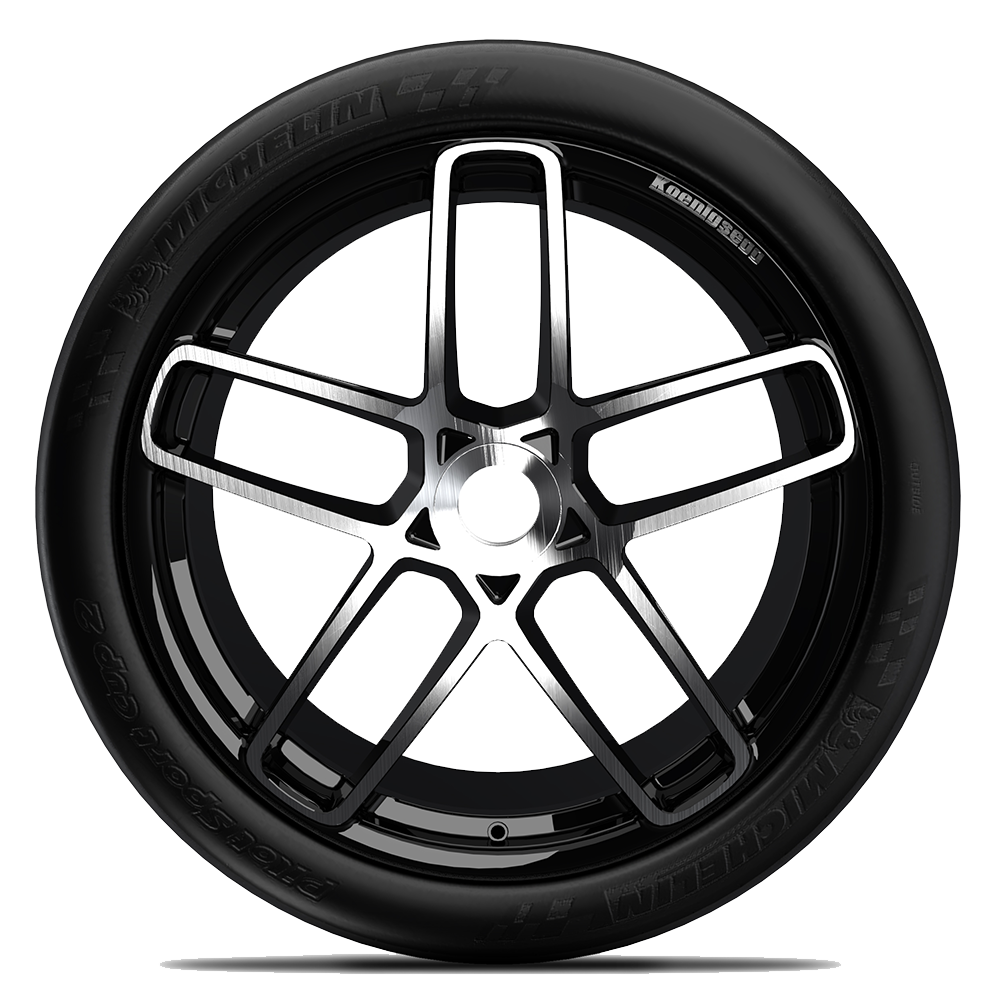
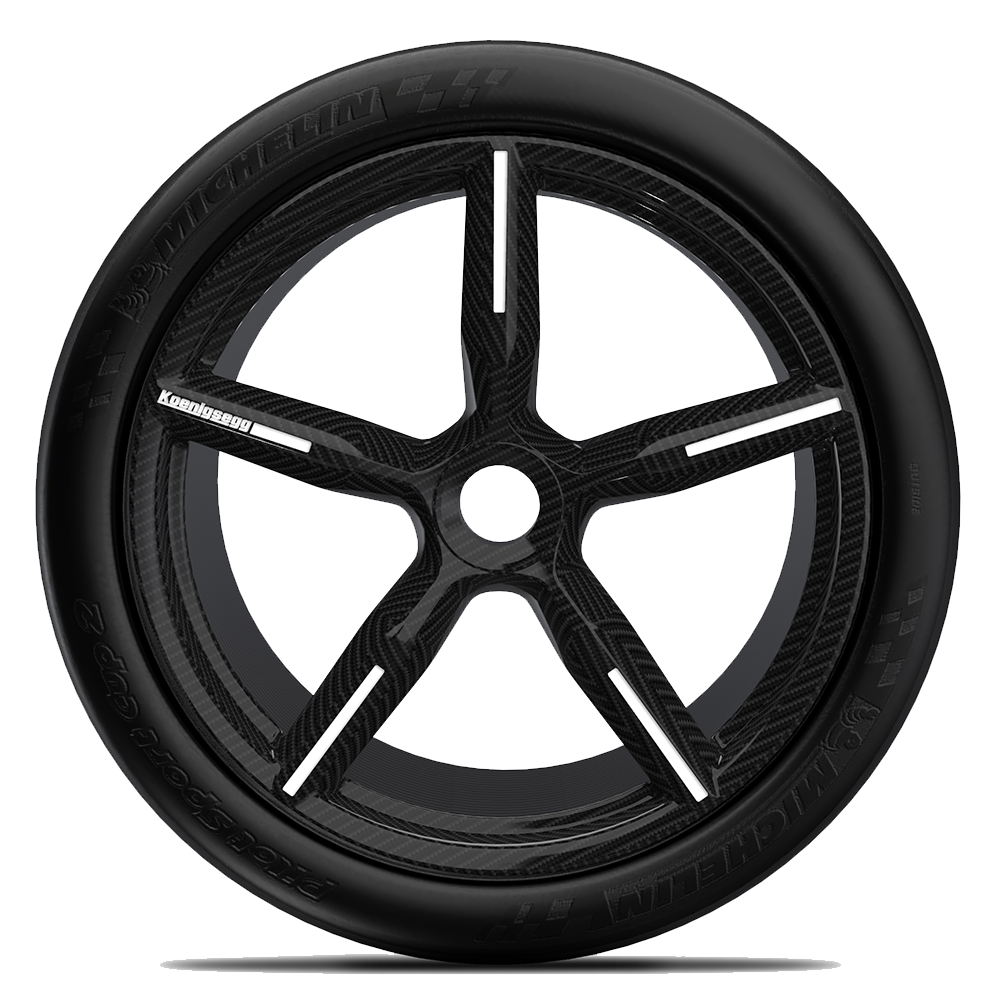
Interior and Equipment
The Jesko Absolut is equipped with a full suite of creature comforts and a level of convenience more befitting a grand tourer than your typical track weapon.
The simple push of a button on the elegant Koenigsegg remote control operates Autoskin, the pioneering body opening system first shown on the Regera. Miniaturised hydraulics that were initially designed to operate aerodynamic systems now engage to open the car’s doors and hoods, allowing true touchless entry.
Koenigsegg’s signature dihedral synchro-helix door hinge has also been re-designed. It now opens slightly outwards and upwards compared to the original. This provides even more room for ingress and egress, and reduces the danger of scraping high curbs. The Autoskin system includes sensors to protect both automated doors from opening where an obstruction is detected.
The interior is swathed in luxury materials – leather, alcantara, carbon fibre, aluminium and glass.
Jesko’s electrically operated seats can be finished in the customer’s choice of leather or alcantara, with an almost endless variety of colour and contrast options. The sport bucket seats are built around a carbon fibre seat shell, resulting in a seat that is both extremely light and comfortable. Controls for seat position and heating are available via the SmartCenter touchscreen. Drivers can find the perfect driving position by matching their seat position with the fully adjustable steering column and pedal box.
SMARTWHEEL ADDED TO KOENIGSEGG’S SMART ARCHITECTURE
Koenigsegg has developed new driver controls using touchscreen technology built into both the new SmartCenter and SmartWheel.
SmartWheel sees two small touchscreens embedded into Jesko’s steering wheel, making a suite of features accessible with just a touch or a swipe. The screens’ default configurations enable functions such as audio control, phone control, ride height control and cruise control. The screens are context sensitive, however, and other options may show or be configured into the system. SmartWheel’s screens feature haptic feedback, allowing ease of use without the need for constant visual connection.
Jesko features a new, racing-inspired and very compact SmartCluster instrument screen. The screen is mounted directly behind the steering wheel and turns as the steering wheel turns. The new 5-inch SmartCluster is extremely compact – it measures just 108mm x 64.8mm – but it contains all the information the driver needs in a neat, logical layout.
- Read More about Equipment
-
The SmartCluster has a circular central zone full of essential information – tachometer, speedometer, power, boost, gear selection and essential driver warning lamps. Outside of the central zone are gauges for fuel level, fuel pressure, oil pressure and temperature.
While the Smartcluster screen physically rotates with the steering wheel, the central zone – and the key information within it – always remains level. This ensures the information is always readable. Having the screen rotate with the steering wheel means it is never obscured by the steering wheel spokes as the wheel is turned.
The 9-inch SmartCenter touchscreen provides control over various infotainment and control systems installed in the car.
Driver and passenger can use SmartCenter to operate the automated climate control system, audio and navigations systems, Bluetooth connectivity controls (inductive charging is fitted), custom lighting controls, and electric controls for mirrors, doors, seats, windows and seat heating.
SmartCenter is also the interface for various vehicle setup and monitoring screens such as traction control, ESP, tire pressure monitoring, and more. If the driver needs to know how something operates, they can always consult an electronic copy of the owner’s manual, also installed on the system.
The software driving SmartCluster, SmartCenter and SmartWheel has been developed in-house by Koenigsegg with support from Qt Professional Services. The application development framework used in development is Qt from The Qt Company. All systems can be updated over-the-air via the Koenigsegg Cloud.
ANALOGUE-G
With the SmartCluster screen located directly on the steering wheel, some space has been liberated on the main dashboard. Koenigsegg has developed an analogue G-force meter that can be fitted in this space.
The hand-made, high-precision analogue G-force meter is housed inside a beautiful chronograph-inspired bezel that sits atop the dashboard on either the driver or passenger side. The gradient scale is calibrated to account for the angle of both the car and the bezel. The pendulum and needle have been designed to provide a fascinating visual account of the car’s behaviour.
It’s modern performance displayed in a beautiful, old-school setting.
FUNCTIONAL BEAUTY
The ambience of the Koenigsegg cabin is one of luxury combined with technology. Rich materials combine with traditional artisan craftsmanship and modern convenience to provide a truly beautiful place to drive without compromise. The cabin is modern and elegant, yet easily switches between relaxed cruising and high-performance track work.
The cabin benefits from Koenigsegg’s new, larger monocoque, with increased legroom and headroom, greater rearward visibility and an even more airy feeling thanks to a larger curved windscreen.
That air of freedom is enhanced even further when the lightweight roof is removed, turning Jesko from a sleek, sporting coupe into a sun-loving roadster.



